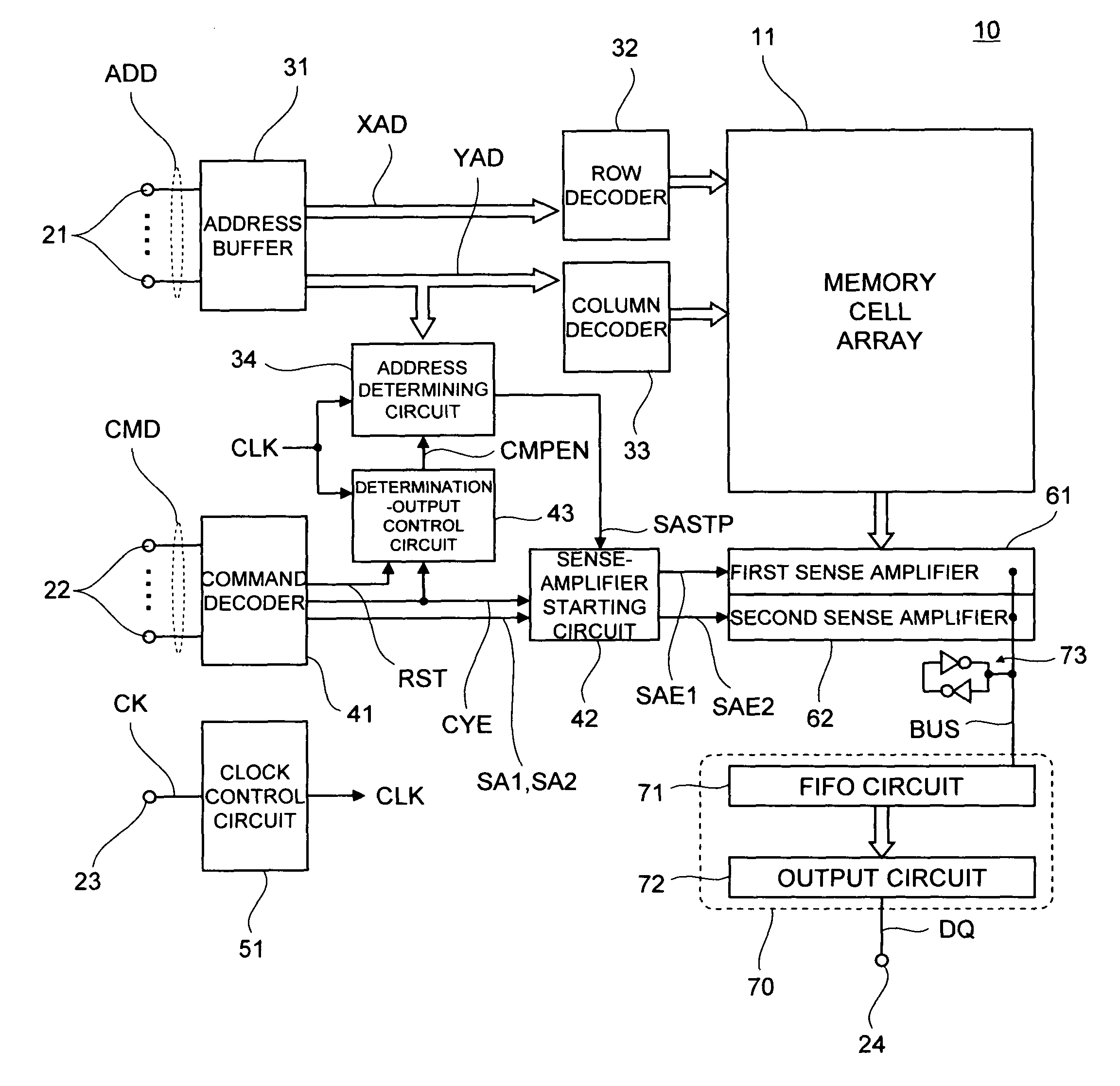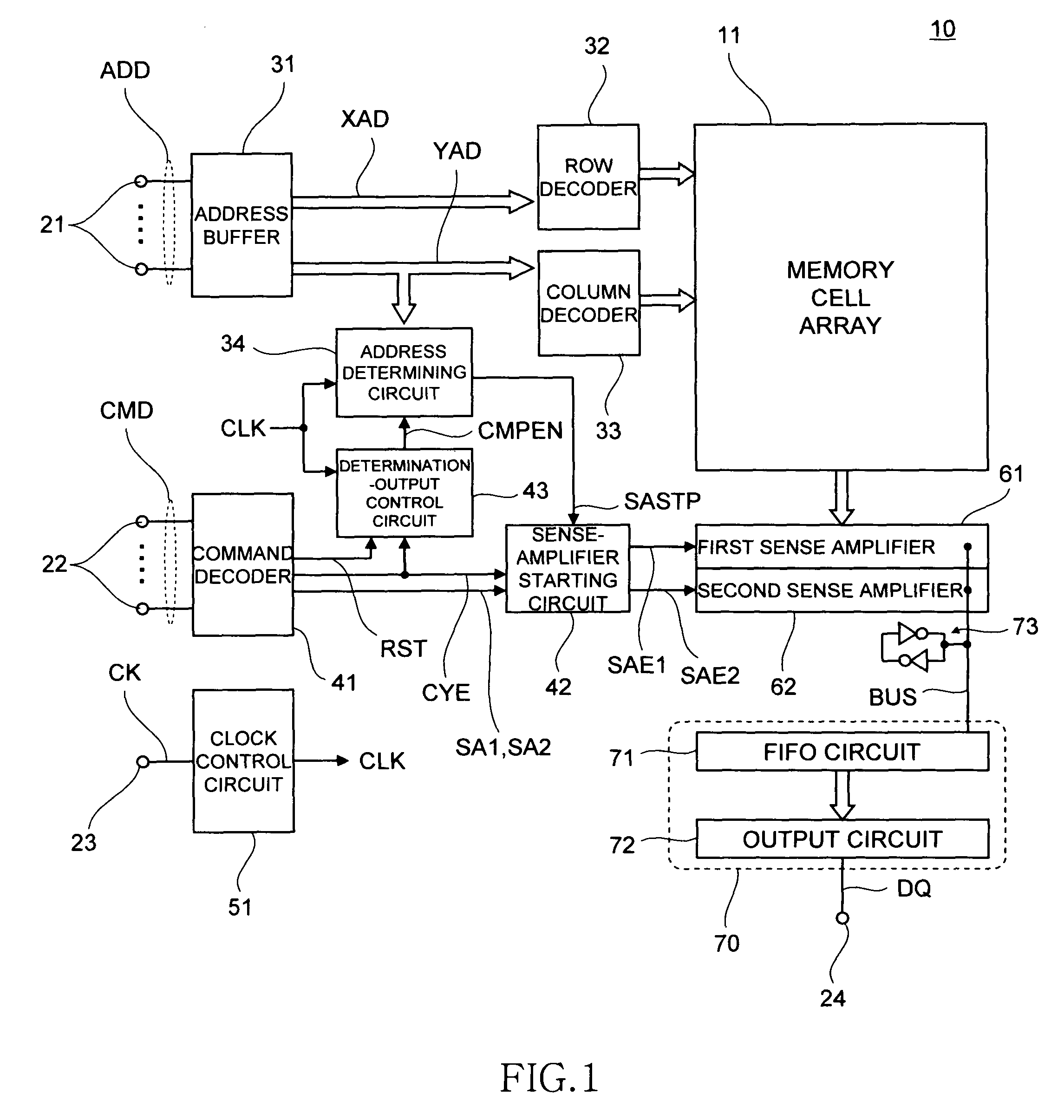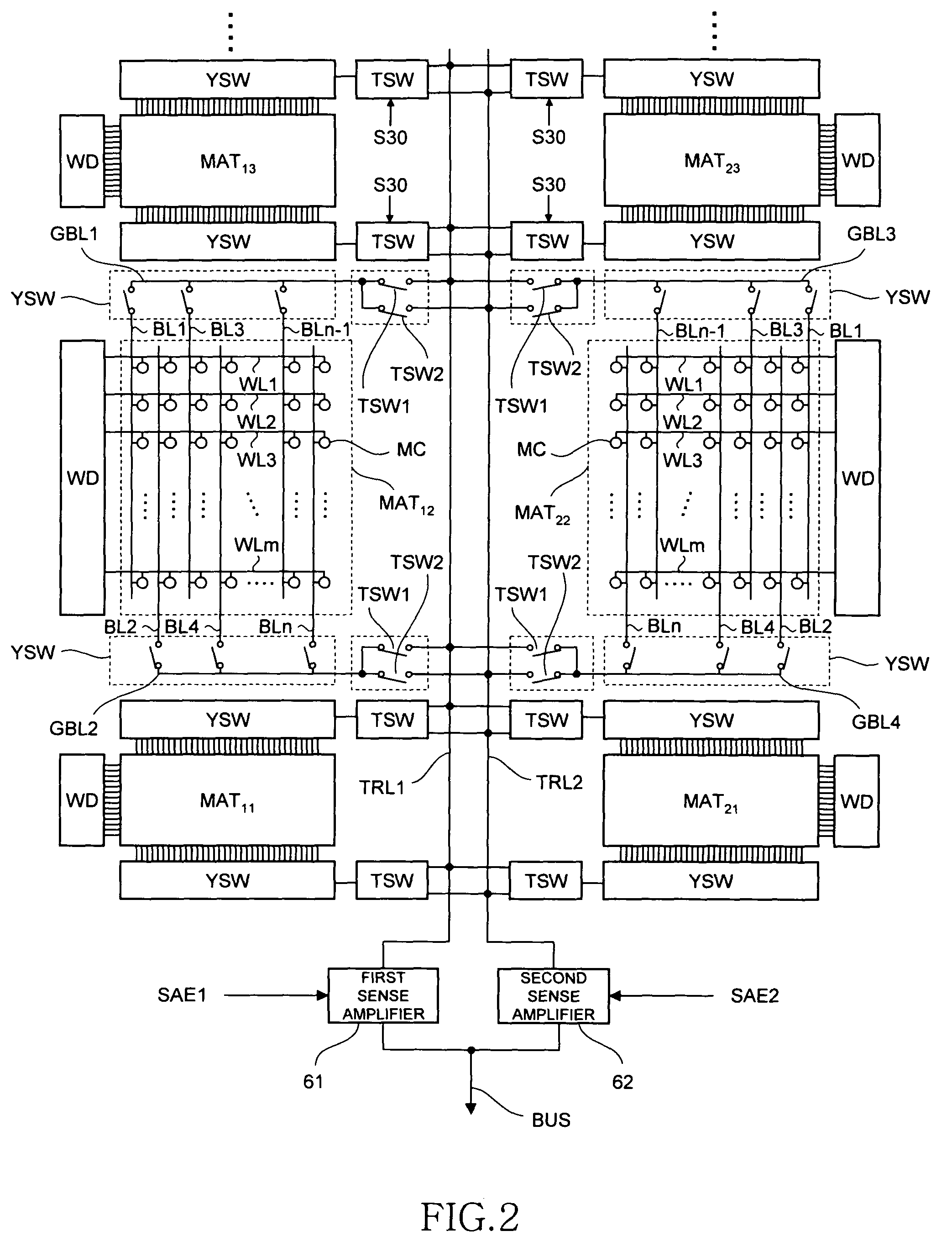Semiconductor memory device and control method thereof
a memory device and semiconductor technology, applied in the direction of information storage, static storage, digital storage, etc., can solve the problems of complicated control by a controller, inconvenient storage of drams, and limit to lowering power consumption, so as to avoid data destruction, avoid data destruction, and secure compatibility with drams
- Summary
- Abstract
- Description
- Claims
- Application Information
AI Technical Summary
Benefits of technology
Problems solved by technology
Method used
Image
Examples
Embodiment Construction
[0031]Preferred embodiments of the present invention will be explained below in detail with reference to the accompanying drawings.
[0032]FIG. 1 is a block diagram showing a configuration of a semiconductor memory device according to a preferred embodiment of the present invention.
[0033]As shown in FIG. 1, a semiconductor memory device 10 according to the present embodiment includes a memory cell array 11 including a plurality of memory cells MC, a plurality of address terminals 21 that receive an address signal ADD, a plurality of command terminals 22 that receive a command signal CMD, a clock terminal 23 that receives an external clock signal CK, and a data terminal 24 that inputs and outputs data DQ. Although not particularly limited, the semiconductor memory device 10 is of a synchronous type which operates in synchronization with the external clock signal CK.
[0034]The address signal ADD inputted via the address terminals 21 is supplied to an address buffer 31. Among the address ...
PUM
 Login to View More
Login to View More Abstract
Description
Claims
Application Information
 Login to View More
Login to View More - R&D
- Intellectual Property
- Life Sciences
- Materials
- Tech Scout
- Unparalleled Data Quality
- Higher Quality Content
- 60% Fewer Hallucinations
Browse by: Latest US Patents, China's latest patents, Technical Efficacy Thesaurus, Application Domain, Technology Topic, Popular Technical Reports.
© 2025 PatSnap. All rights reserved.Legal|Privacy policy|Modern Slavery Act Transparency Statement|Sitemap|About US| Contact US: help@patsnap.com



